We humans transform landscapes and leave our unmistakable marks on the world. But these marks are not always indelible, because when we move out, nature quickly moves in to stake its claim once more.
Houtouwan, China
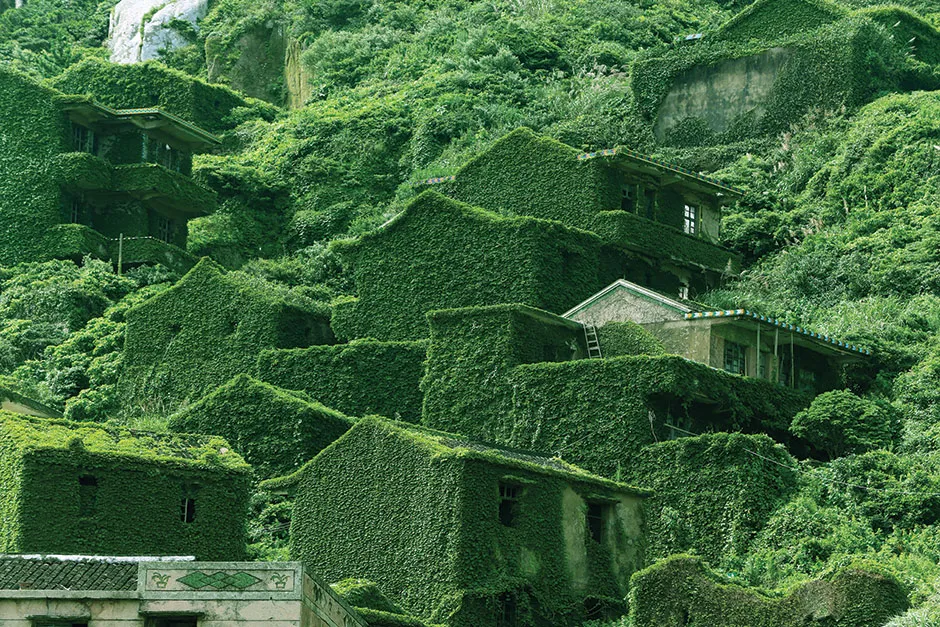
In the 1990s, residents started leaving Houtouwan village on China’s Shengshan Island. This hilly isle is part of the Shengsi archipelago, lying less than 100km from the bustling streets of Shanghai on the mainland.
In less than 30 years, Houtouwan has been entirely engulfed by vegetation. Only a decade before it was abandoned, it was a fishing village with 3,000 inhabitants. When the residents’ demand for seafood began to outstrip what the island could supply, fishers took their families to the mainland, with a few later returning to show tourists around.
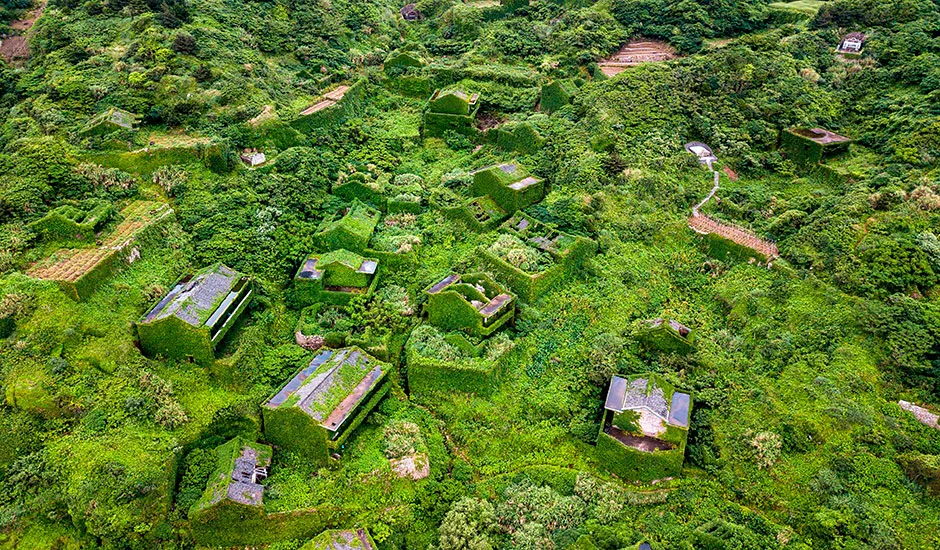
Visitors like to peek inside the abandoned buildings, many of which have a museum-like quality, with remaining furniture and household items painting a picture of the recent past. However, locals have had to put up warning signs – some of the buildings are thought to be unsafe to enter due to creepers speeding up deterioration of the architecture.
See more amazing nature photos:
- 14 stunning photos of birds making incredible journeys across the Earth
- 19 beautiful pictures from the Nature TTL Photographer of the Year 2020 competition
Hong Kong, China
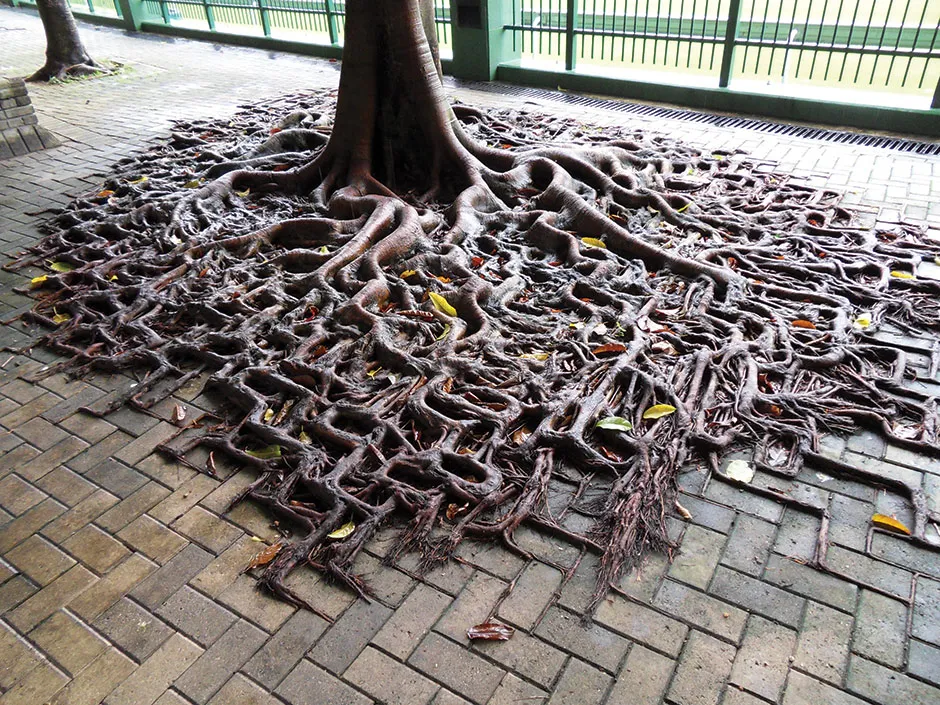
In China, the aerial roots of banyan trees cling to walls and protrude through pavements. Prof Chi Yung Jim, from the Education University of Hong Kong, is an expert on urban forestry and has counted over 1,100 banyans attached to the city’s stone walls.
“These wonderful doyens are the quintessential examples of nature existing harmoniously with culture in an exceptionally high density city,” he says. Aerial roots are roots that grow above ground and are found in a wide variety of plant species.
The neat, angular patterns formed by the roots in this picture demonstrate their slow search for water and nutrients along the narrow gaps between paving stones. These patterns are something to be relished while a banyan tree is still young, Jim explains, as they will eventually be diluted as the roots expand to fill the gaps between themselves.
Ōkunoshima, Japan

The island of Ōkunoshima is barely more than a kilometre wide but that’s plenty big enough to accommodate a thousand rabbits. Better known as Rabbit Island today, this speck of land was once dubbed ‘Poison Gas Island’, because in the 1920s it was used for chemical weapons testing by the government.
The bunnies’ ancestry is up for debate. While some believe they are descended from lab rabbits brought here during the tests, others claim those rabbits were killed when the research ended and the current population stems from another source – such as releases by holidaymakers or local schools.
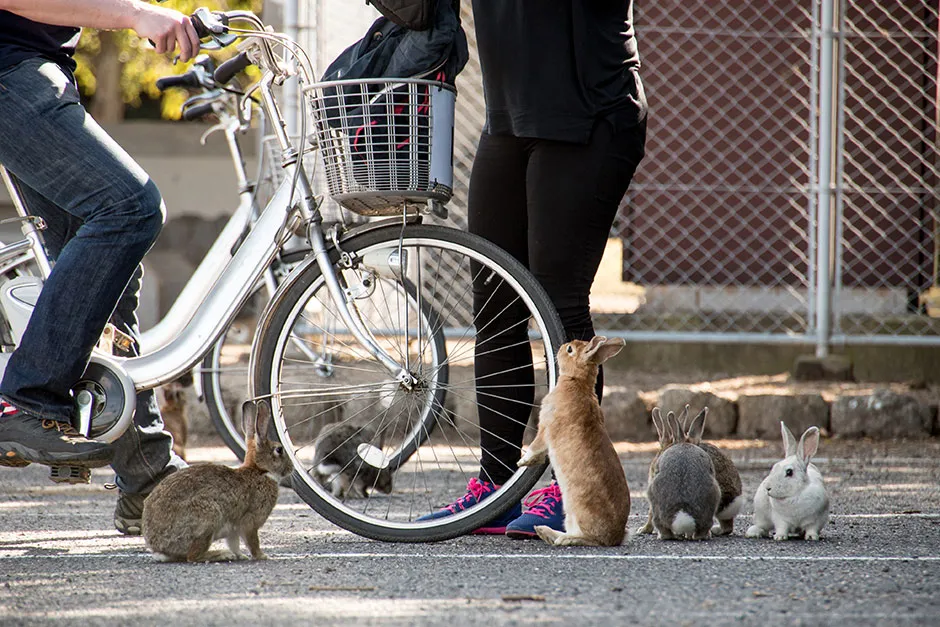
Today, tourists can catch a ferry from the mainland, resulting in hundreds of TripAdvisor reviews. Though one visitor remarked on the surreal experience of a beautiful island being “overrun with tame bunnies and yet filled with threatening remnants of past atrocities.”
Bangkok, Thailand
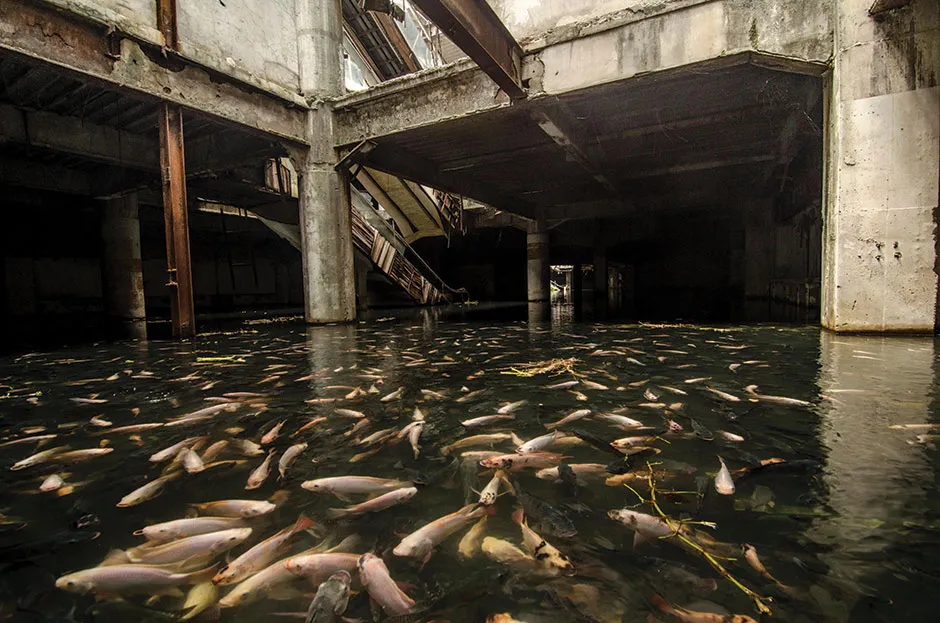
This Thai shopping mall near a tourist hotspot in Bangkok was half-demolished in 1997, due to a conflict over building codes. It then burned down two years later. But none of that stopped aquatic life from flourishing in the rainwater that slowly filled the building.
It is thought that a few tilapia, catfish and koi carp were first introduced by an unknown person in the early 2000s in order to control the mosquitoes that were breeding in the water. Now, the fish number in the thousands.
Photographer Jesse Rockwell, who discovered the fish after venturing down a stairwell at the New World Mall, wrote on his blog: “[The fish] began to thrive and the result is now a self-sustained, and amazingly populated, urban aquarium.”
DMZ, North and South Korea
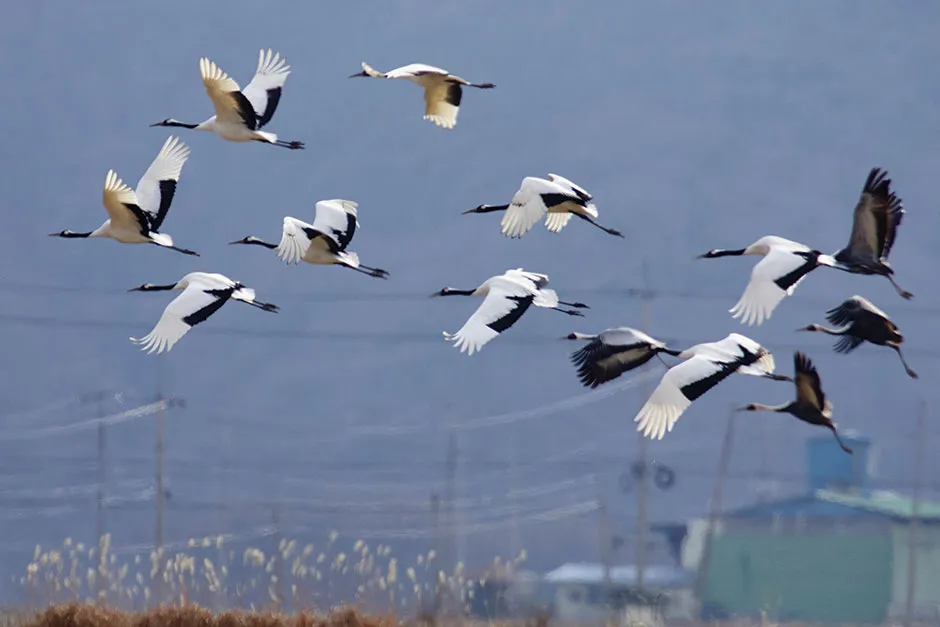
There’s no love lost between North and South Korea, but there is a wilderness. This 250km-wide strip of land was farmland until 1953, when it was designated a demilitarized zone (DMZ) at the end of the Korean War.
It might be guarded on all sides by soldiers, but inside it has become a sanctuary for wildlife – and notably, the cranes in this picture.
The DMZ is the only place in the world where red-crowned and white-naped cranes still co-exist. The International Crane Foundation is collaborating with North and South Korean scientists to secure this important wintering ground for the birds.
Although the blur of their wings makes them hard to separate, this flock of mostly red-crowned birds is accompanied by a few white-naped individuals towards the back.
The red-crowned crane is one of more than 100 endangered or protected species living in the DMZ. Siberian tigers reportedly prowl here too.
See more fantastic science photos:
- 8 beautiful Hubble Space Telescope images you probably haven't seen before
- Seven beautiful clouds to brighten your day
Kolmanskop, Namibia
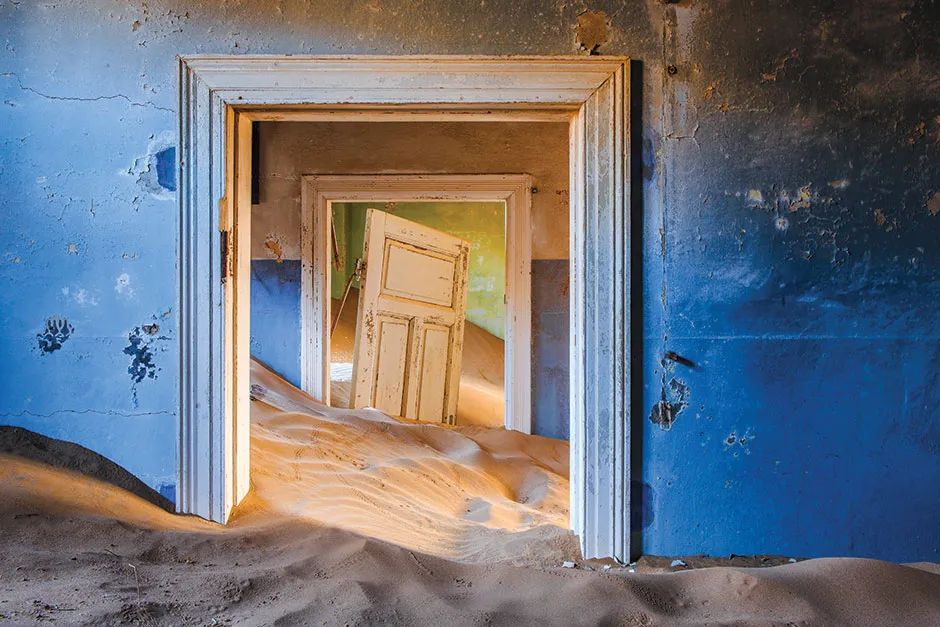
Early in the 20th Century, German mining companies descended on a patch of the Kalahari Desert served only by a small railway station, 10 kilometres from the Namibian coastline.
By 1912, Kolmanskop, the town that emerged from the sand, was producing 12 per cent of the world’s diamonds. Namibia was under German rule at the time and Kolmanskop quickly grew from a ramshackle collection of wooden buildings to an impressive display of European architecture, boasting a pub with a skittles alley and a music hall.
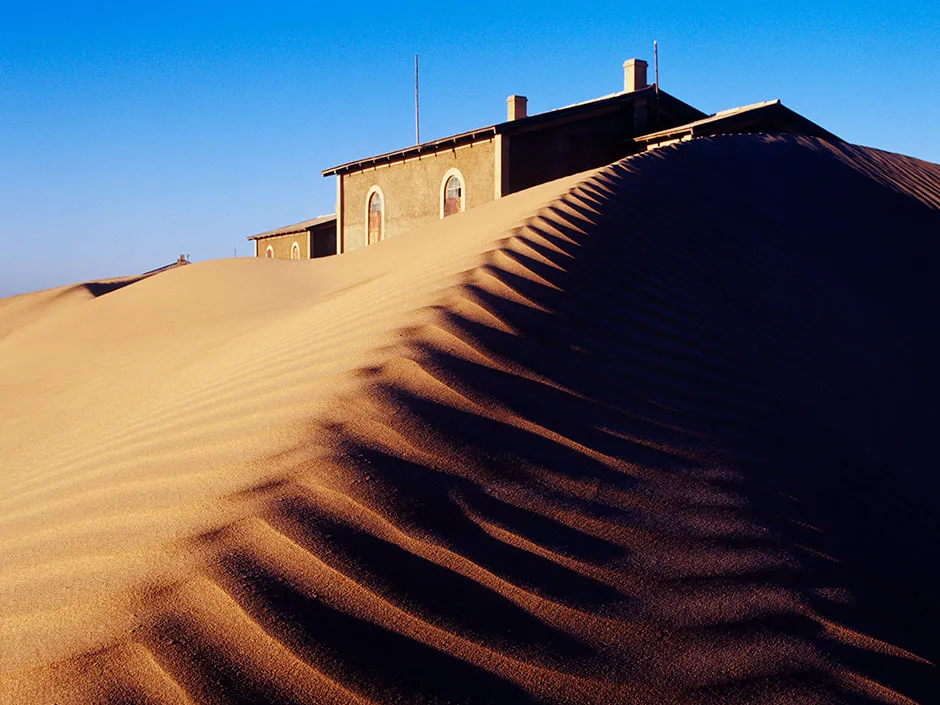
However, when richer sources of diamonds were discovered further south, the fortune-seekers moved out and the sands swept in. The dry, windy climate of this coastal region moves the sand around a lot and by 1956 there was nobody left in Kolmanskop to sweep it up any more.
As a result, it started piling up in the handsomely decorated buildings, now just remnants of a different time.
Parramatta River, Australia
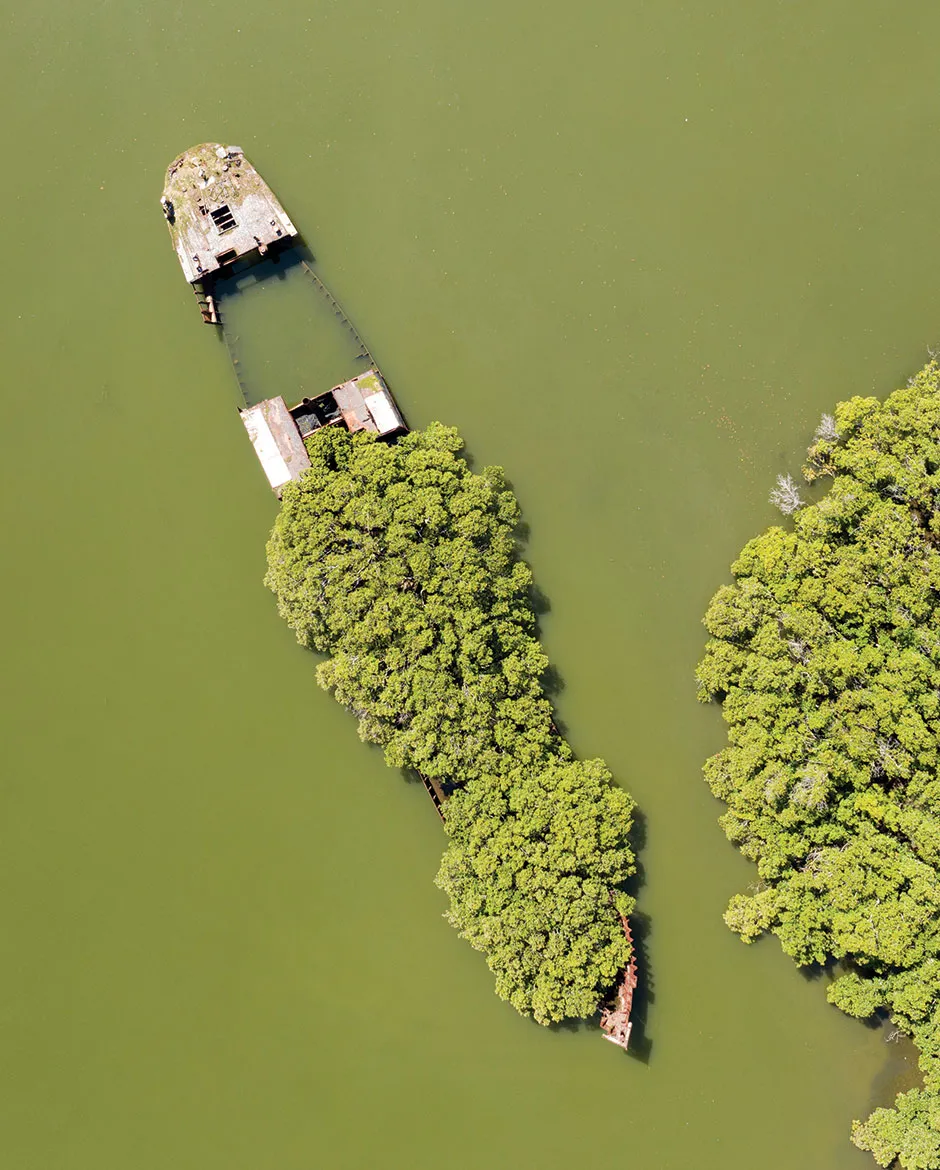
Built to supply troops during WWII, the British freight ship SS Ayrfield now finds itself marooned in Homebush Bay on the Parramatta River, which runs to Sydney Harbour, Australia.
The 70m-long freighter was still operating in the 1970s, but after its documents were cancelled, it found its final resting place in the bay. Although the hull was dismantled, the rest was left to rot. Over the years the ship has sprouted an unexpected cargo in the form of a mangrove forest.
As part of a regeneration project, there are plans to clean up the river, but the shipwreck should remain. “The mangroves that occur within the shipwreck are ‘marine vegetation’ that are important fish habitat and are protected,” says Troy Holbrook, the senior open space and natural area planner for Parramatta.
- This article first appeared in issue 349 of BBC Science Focus